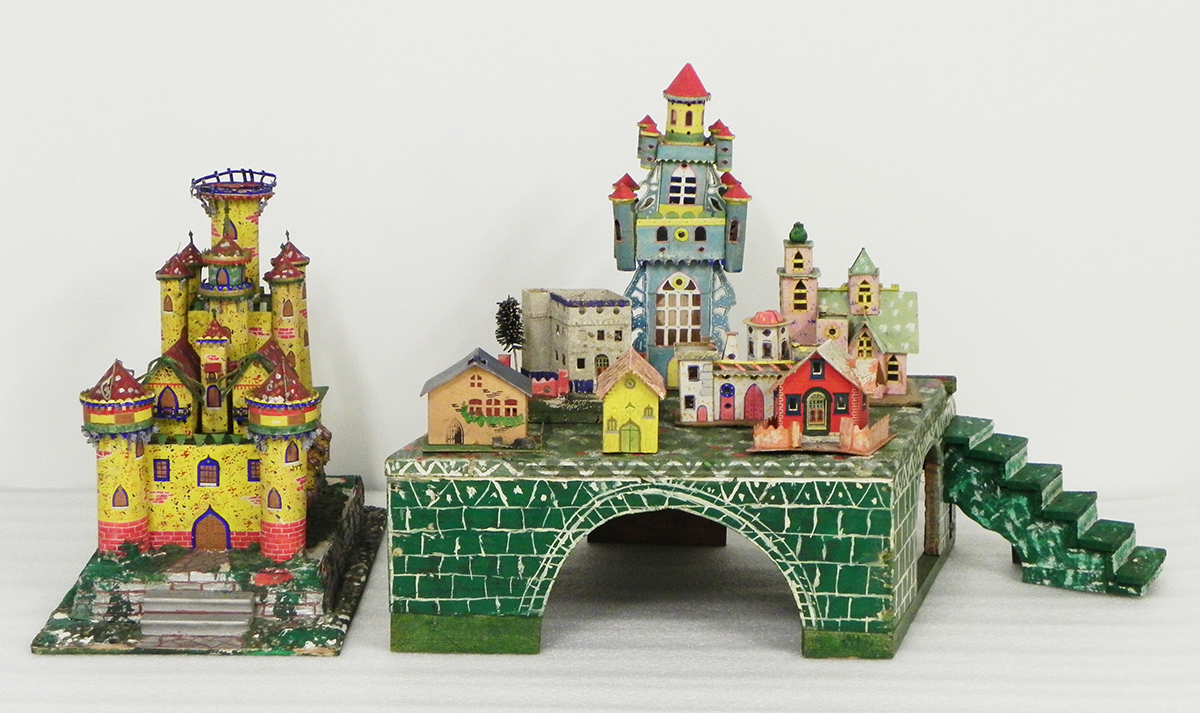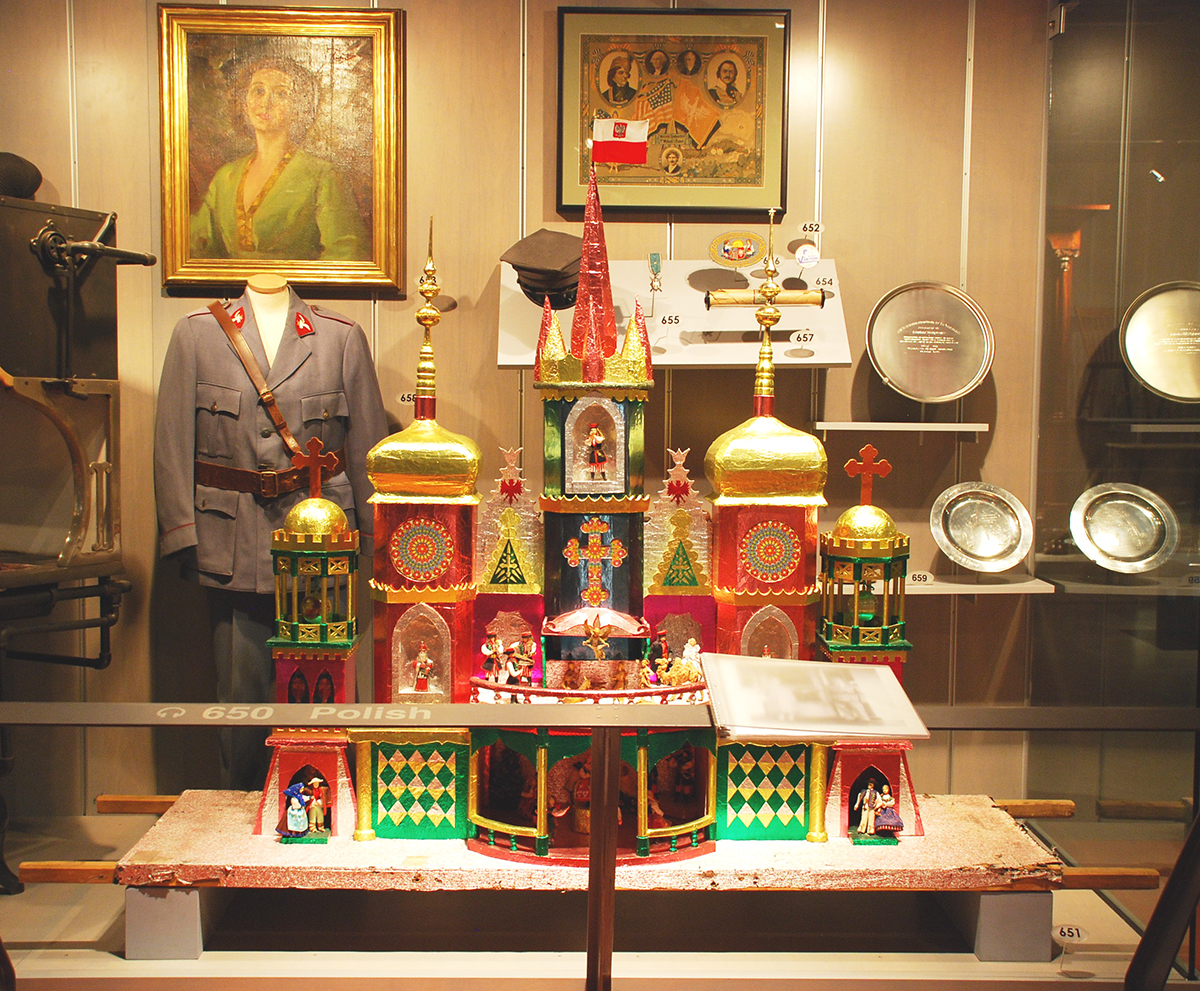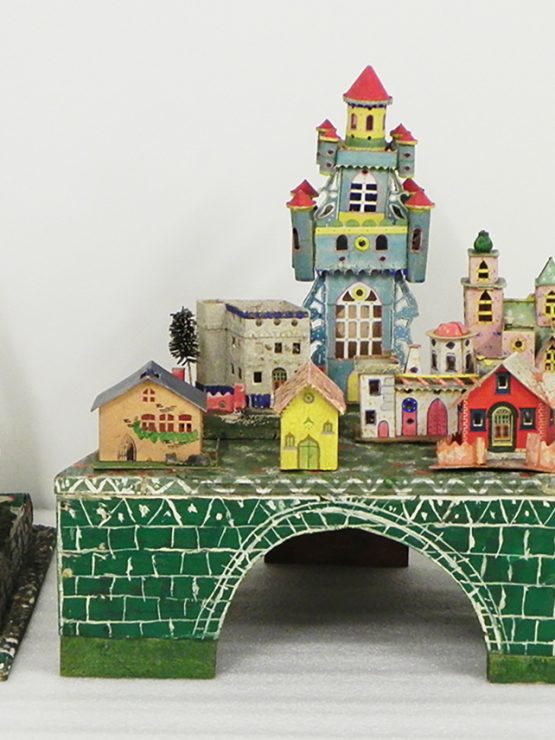
The History Center Italian American Collection’s 33 piece presepio was originally amassed by the Albini family of Vandergrift, Pa. A tradition originating in 13th century Italy, a typical presepio consists of a manger scene surrounded by a miniature village reminiscent of the regional landscape. Though Neapolitan variations are the most well-known, the custom is prevalent in both Northern and Southern Italy and often utilizes materials native to those locales.
These buildings and figurines – some handmade, some store-bought – are a part of the Christmas presepio that decorated Albino Albini’s home. A cabinet maker by trade, Albini was an immigrant from the Calabrese town of San Pietro in Guarano. He took great pride in his family’s presepio and added a new piece every holiday season, much to the delight of his neighbors in Vandergrift that looked forward to the display each year. For the Albini family and many other Italian Americans, the annual practice of displaying the presepio was as important as trimming the Christmas tree.

A traditional Polish nativity scene, the szopka is a tradition founded in the city of Krakow, Poland. The manger scene is set in an elaborate surrounding based on the architecture of the city. Besides the nativity scene, the szopka also incorporates many other figures of local life. Traditionally, the szopka was carried from house to house during the Advent season. Those who carried it performed puppet shows and sang Christmas carols and were rewarded with food and drink. When Polish immigrants came to Pittsburgh, they brought this tradition with them. This particular szopka, created in the 1980s by Joseph Baranowski, is based on the cathedral of St. Mary’s in Krakow.
See both the presepio and the szopka on display this holiday season in Visible Storage and the Special Collections Gallery, respectively, on the History Center’s fourth floor.
Emily Ruby is a curator at the Heinz History Center. Melissa E. Marinaro is the director of the Heinz History Center’s Italian American Program. Both Emily and Melissa contributed to this post.
